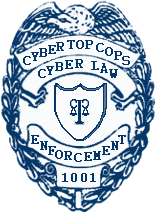Chain Letter Spam & Hoaxes
Chain letters is the vehicle of identity theft and spam. By forwarding e-mails like these, you (and everyone else who already participated in the chain) walk the risk of having your e-mail address sent to a spammer along the line. You provide the fuel for online fraud, scams and spam by taking part in chain letters. Petition lists for example are mostly designed to collect e-mail addresses for spamming purposes and not for the purpose explained in the e-mail. People add their names and e-mail addresses in the body of the e-mail and forward it to as many people as possible. This process repeats itself until the list reaches a certain amount of entries, at this point the e-mail, that contains hundreds of e-mail addresses and names, are sent back to the original creator of the e-mail. These people receive hundreds of versions of the same e-mail, some of them containing the same e-mail addresses. They never go to any effort to get rid of the duplicate entries and that is why you sometimes get several copies of the same spam e-mail on a single day.
Hoaxes on the other hand create panic, excitement, misunderstandings and chaos, depending on the type of hoax. Hoaxes waste bandwidth, create unnecessary bottlenecks and cause delays on mail servers. Hoaxes are basically designed to waste our time, no matter how you look at it. Hoaxes are also distributed on a large scale, this means that your e-mail address may land in the hands of thousands of recipients, if the e-mail was forwarded with your e-mail address intact (which happens most of the times anyway). A spammer may also be on the mailing list, or may receive a forwarded copy of the hoax, one that may contain your e-mail address and perhaps your name and surname as well.
Below are links to copies of typical Chain Letter Spam e-mails and Hoaxes. Note that the original formatting of the e-mails was preserved and this is more or less how they look when you open them.
- Brain Cancer Chain Letter
- Kidney Stealing Hoax
- Leukaemia Chain Letter
- Lynnwood Manor Attack Chain Letter
- Mars Coming To Large View Hoax
- The Millionaires List Money Making Spam
- Olympic Torch Virus Hoax
- Make A Wish Chain Letter
For more information about the implications of spam and chain e-mails like this, visit the following page:
Internet Safety: E-mail safety - Chain e-mail and read our article about the Dangers of Chain Letters and Petition Lists.







